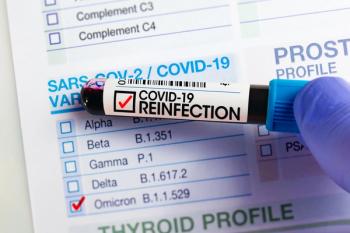
KRAKEN Trial Highlights Muvalaplin’s Efficacy, Safety in Reducing Lipoprotein(a)
Key Takeaways
- Muvalaplin significantly reduces Lp(a) levels, with up to 85.8% reduction at the highest dose in the KRAKEN trial.
- The trial showed dose-dependent decreases in apolipoprotein B levels, with no significant changes in high-sensitivity C-reactive protein.
Muvalaplin is an oral, small molecule inhibitor that can reduce lipoprotein(a).
Muvalaplin (LY3473329; Eli Lilly and Company) demonstrated meaningful improvements in reducing lipoprotein(a) (Lp[a]) and was well tolerated by patients with Lp(a) at high risk of cardiovascular events, according to data published in JAMA.1
According to the American Heart Association, approximately 1 in 5 people worldwide have high Lp(a) levels, which is a genetically inherited type of lipoprotein. It is made in the liver and elevated levels are associated with an increased risk of atherosclerotic cardiovascular disease (ASCVD). Lp(a)’s structure is similar to low-density lipoprotein (LDL), consisting of an LDL particle which contains apolipoprotein B connected to apolipoprotein A.2
Muvalaplin is an oral, small molecule that inhibits the formation of Lp(a). Based on data from a prior 14-day phase 1 clinical trial, muvalaplin treatment was well tolerated and reduced levels of Lp(a) by up to 65%. However, the safety and efficacy of the therapy at longer durations of time remained uncertain. In the phase 2, randomized, double-blind, placebo-controlled KRAKEN trial (NCT05563246), investigators aimed to determine the effect of muvalaplin, as well as its safety and efficacy.1,3
Their study involved 233 participants with Lp(a) concentrations of 175 nmol/L or greater with atherosclerotic cardiovascular disease, diabetes, or familial hypercholesterolemia. The median age of study was 66 years of age, with 33% female, 27% identified as Asian, 4% as Black, and 66% as White.1
The investigators randomized the patients to receive either muvalaplin at dosages of 10 mg/d (n = 34), 60 mg/d (n = 64), or 240 mg/d (n = 68) or placebo (n = 67) for 12 weeks. The primary end point was the placebo-adjusted percentage change from baseline in Lp(a) molar concentration at week 12, which was done using an assay to measure intact Lp(a) and a traditional apolipoprotein(a)-based assay. The study also included secondary end points of percentage change in apolipoprotein B and high-sensitivity C-reactive protein.1
According to the data, there were reductions of 47.6% (95% CI, 35.1%-57.7%) at a dosage of 10 mg/day, 81.7% (95% CI, 78.1%-84.6%) at 60 mg/day, and 85.8% (95% CI, 83.1%-88.0%) at 240 mg/day. Using an apolipoprotein(a)-based assay, reductions were 40.4% (95% CI, 28.3%-50.5%), 70.0% (95% CI, 65.0%-74.2%), and 68.9% (95% CI, 63.8%-73.3%) for the same dosages, respectively.1
The investigators also reported dose-dependent decreases in apolipoprotein B levels, with reductions of 8.9% (95% CI, −2.2% to 18.8%), 13.1% (95% CI, 4.4%-20.9%), and 16.1% (95% CI, 7.8%-23.7%) for the 10-mg/day, 60-mg/day, and 240-mg/day doses. No changes were noted in high-sensitivity C-reactive protein levels, and no safety or tolerability concerns were identified at any dose.1
These findings suggest that treatment with muvalaplin yielded meaningful reductions in Lp(a) with little to no safety concerns or toxicities. Further studies with larger patient populations and longer follow-up periods are needed to confirm these benefits and evaluate the impact of Lp(a) reduction on clinical outcomes, such as the risk of major adverse cardiovascular events. However, the initial findings of the KRAKEN trial indicate the potential of muvalaplin as a therapy for Lp(a) reduction.
REFERENCES
1. Nicholls S, Ni W, Rhodes G, et al. Oral muvalaplin for lowering of lipoprotein(a)A randomized clinical trial. Jama. November 18, 2024. doi:10.1001/jama.2024.24017
2. Zerlasiran shows significant lipoprotein(a) reduction in phase 2 trial. Pharmacy Times. December 2, 2024. Accessed December 24, 2024. https://www.pharmacytimes.com/view/zerlasiran-shows-significant-lipoprotein-a-reduction-in-phase-2-trial
3. A study of LY3473329 in adult participants with elevated lipoprotein(a) at high risk for cardiovascular events (KRAKEN). Updated March 28, 2024. Accessed December 24, 2024. https://www.clinicaltrials.gov/study/NCT05563246
Newsletter
Stay informed on drug updates, treatment guidelines, and pharmacy practice trends—subscribe to Pharmacy Times for weekly clinical insights.


















































































































































































































